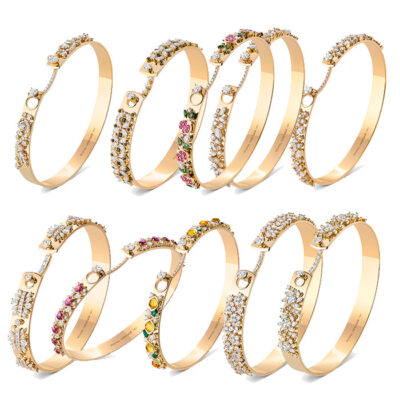Style
30 September 2020
Share
Tiny sparks of grandeur
Marie Genon, founder and designer of Irène, has transformed the Grand Palais into a series of jewels. From the majestic to the minuscule, this young woman delivers an extraordinary first jewelry opus that toys playfully with ratios of scale.
By Sandrine Merle.
Marie Genon’s first collection is a tribute to the Grand Palais built for the Universal Exhibition of 1900. Thanks to miniaturization to the scale of 1/5000, she has recreated it in the reduced space of a cuff, a brooch and – the centerpiece – a ring. And for the presentation, she brings us a mise en abyme inside a model of the Parisian monument on a scale of 1/250.
Why the Grand Palais?
Passionate about miniaturization, Marie Genon long ago created 1/5000 scale models of the sets of spectacular Chanel fashion shows. The Grand Palais transformed into a hypermarket with heaving shelves, past which models pushed their trolleys, the Grand Palais housing the Eiffel Tower or gigantic icebergs imported from Sweden and even a rocket launched towards the stars. Her meticulous models featured the tiniest details, from packets of washing powder to melting ice. Her shift to jewelry (courtesy of her training at the Haute Ecole de la Joaillerie) grew out of a desire for materials that were lasting and unchanging.
“Infinitely small, intensely precise”
Her jewels represent the Grand Palais recast as if for an imaginary fashion show. The cuff showcases the nave and its structure with gold crossbars suggests scaffolding, punctuated with emeralds and aquamarines. The ring (cf the banner with the video), a particularly complex piece, echoes the exact plan with its rock crystal glass roof, recreated pane by pane, each of which opens. Lush vegetation and waterfalls spring from its plateau: on the profiles of the setting, these are reflected in lines of brilliant-cut or marquise cut diamonds. “The difference in sizes expresses the speed of the water flow,” says Marie. There is no doubt about her passion for “the infinitely small and intensely precise”.
Truly impressive
“For a first exhibition, Marie’s work is truly impressive. She knew exactly what she was talking about, and the style she wanted, in the tradition of René Lalique, Verdura or Suzanne Belperron,” explains Stanislas Zeller of the Paris-based Bermudes workshop. Beforehand, Marie had provided him with hundreds of documented studies, technical plans and material analyses. “It’s very inspiring,” says Zeller. Hence the opening up of the field of possibilities and technical feats such as the “dome sculpted in a single rock crystal engraved upside down and placed on extremely fine gold lace. The dome itself is placed on another rock crystal.”
Marie’s dream would be for a collector to acquire all three pieces along with the presentation model. She also envisages that no one will follow in her footsteps on this crazy journey: she then plans to melt it all down to recover the raw material. Given her scientific background, Marie is unmoved by the prospect – because nothing is lost, nothing is created, and everything is always in motion.
Related article:

















